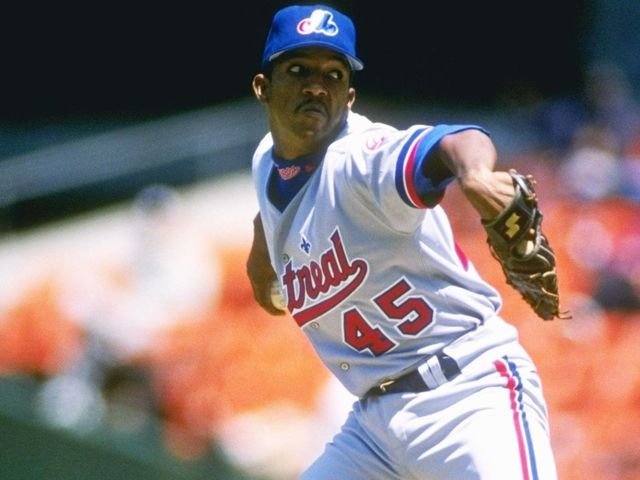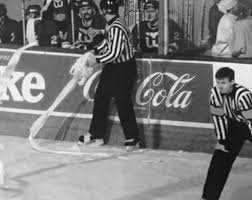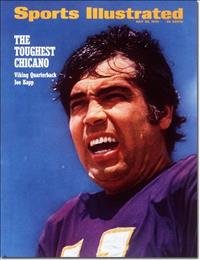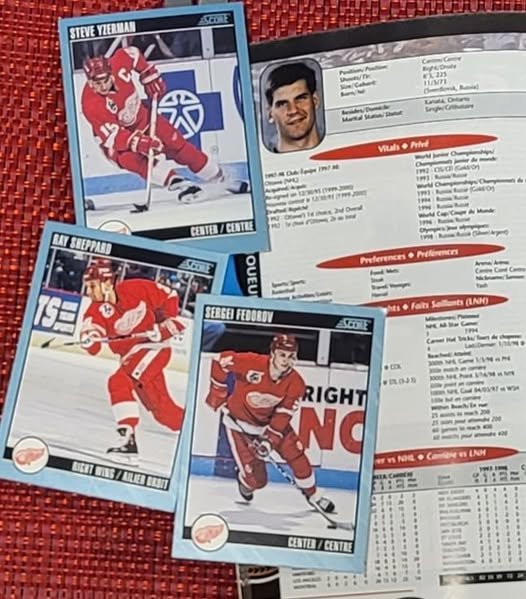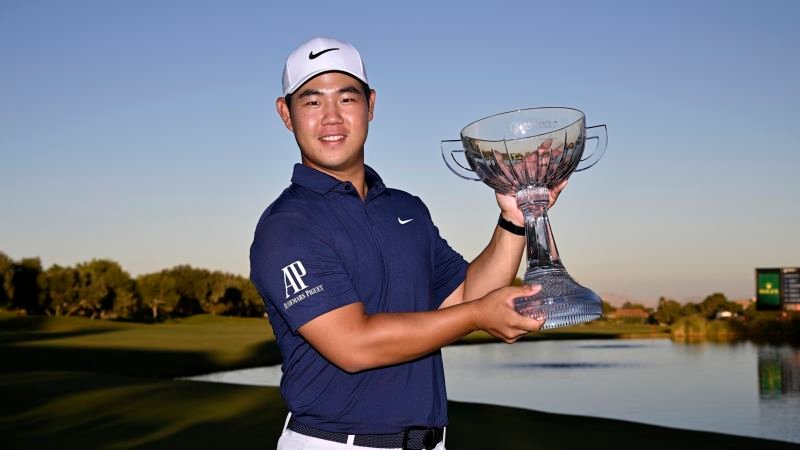Golf is a wonderful game. It’s also a difficult and humbling game. Mastering it is a neverending quest and to do it, even for a short period of time, is an amazing thing. It’s a game of constant learning and constant adjustments, and it’s also a game that one can play for life, as long as one’s health allows them. It’s a game for the young and it’s a game for the old. As we look at it today, it’s a game for everyone, no matter where one comes from.
Tune into a golf broadcast on your television today and you’ll see a lot of diversity on your screen. There are players from all over the globe, and on any given weekend, it seems that almost anyone can emerge as the winner come Sunday evening, Eastern Time.
The most celebrated golf tournament that exists today is The Masters, and every year it portends the unofficial beginning of spring, especially in North America. As we watch it today, we’ve seen Tiger Woods win it a handful of times. Jon Rahm, Sergio Garcia, Seve Ballesteros, Hideki Matsuyama, Adam Scott, Miguel Angel Cabrera and Charl Schwartzel are among the many who have now won the tourney from countries other than the United States.
The home of The Masters is Augusta National and the lush green fairways and the beauty of the flora on the course have been celebrated for decades. There has been an aura of romance and perfection over the place for decades and that has been carefully cultivated as time has passed. The Masters, like the Professional Golfers Association Tour, has long been the home to the finest players and qualifying for both has always been difficult and rigorous.
As diverse as golf may appear today, it wasn’t always that way. It’s certainly wonderful to look out and see leader boards that are multi-national. But for a large part of golf’s history, the ball wasn’t the only thing that was all-white.
When I think back to my childhood and my teen years in the 1960s and 70s, the game of golf was largely one of solely white faces. Going back, Jack Nicklaus and Arnold Palmer and Gary Player were the stars of my youth. They were preceded by Gene Sarazen and Ken Venturi and Sam Snead and Bobby Jones. One of the first books on golf that I remember reading was written by Tommy Armour.
It was difficult, if not impossible, for golfers who were not white to pierce the cloak that enveloped the professional game of golf. In fact, until 1961, the PGA had a clause in its bylaws that read “Caucasians-only”. The first African-American golfer that I remember was Lee Elder. But he was not the first black man to play on the PGA Tour. Charles Sifford, Calvin Peete and Jim Dent are others whom I remember seeing on my television as the 70s and 80s would move forward.
Sifford was the first black man to acquire a PGA Tour card though, when he did so in 1961. But he would face his own barriers as he embarked on his golf journey. Sifford won the 1967 Greater Hartford Open and the 1969 Los Angeles Open. For anyone else, had they won those tournaments, they would have been invited to play in The Masters the following year. But Sifford was not.
Clifford Roberts was the chairman of Augusta National at the time and he ruled the place with what some have described as “an iron fist”. He financially navigated the club through some early murky waters and made the course a financial success. But he also was known by perhaps his most odious remark. “As long as I’m alive, all the golfers will be white, and all the waiters and the caddies will be black.”
When Lee Trevino, a Hispanic-American, was at his best, there was a window of a few years in which he was invited to play in the Masters, but he would not go. Why not? He despised Cliff Roberts. Eventually, Jack Nicklaus would persuade Trevino to change his mind, but that spectre of racism was there over the tournament, nonetheless.
While black men were permitted to play on the PGA Tour from 1961 forward, it wasn’t until 1975 that one was invited to play in The Masters. Lee Elder was the first to tee it up at Augusta. He had won the 1974 Monsanto Open and therefore qualified to play in The Masters. Sadly, he was eliminated after 36 holes. But the previous year, another black golfer was being considered for admission into the tournament.
Jim Dent was an Augusta native, and, in his day, he was one of the longest hitters on the Tour. When his possible qualification came up in 1974, Roberts made mention that Dent’s cousin was the ‘maitre d’ at Augusta National. When someone asked Roberts the cousin’s name, Roberts conferred with someone else at the table and then came back with “We just call him Dent.” It probably goes without saying that Jim did not qualify for that edition of the tourney.
Though Charles Sifford was the first African-American to qualify for a tour card, he was not the first to win a PGA tournament. That distinction belongs to Pete Brown. Brown was born in February of 1935 in Port Gibson, Mississippi and grew up in Jackson. As a kid, he worked as a caddy and played the game recreationally as well.
In his early 20s, he developed a form of polio but managed to recover and he was able to go on and play golf professionally. In 1961, Brown won the Negro National Open. He repeated as champion in 1962 as well. In 1963, he received his PGA Tour players’ card. In May of 1964, Brown and Sifford were playing in the $20,000 Waco Turner “Poor Boy” Open and after three rounds, the two men were tied for second at -6, one shot back of the leader, Dud Wysong, Jr.
In that tournament, there were separate prize payments in addition to the $20,000 available in winnings. For a birdie, a golfer would earn an extra $15. A chip-in would garner a golfer $25. There was $50 for an eagle, $100 for the low daily score and $500 for a hole-in-one. After the first three rounds, Brown had made himself an extra $295. Not too bad in 1964.
Brown went 35-35 over the final eighteen holes for a four-round total of 280, 8-under-par. He finished a stroke ahead of Dan Sikes and two shots ahead of Miller Barber and Tommy Aaron. Charlie Sifford finished in a group that ended up three behind Brown. It was safe to assume that no invitation to The Masters would be forthcoming but, immediately following his victory, the 29-year-old Brown was told that he got a personal request to play in the 72-man field at the Colonial National Invitational at Fort Worth the following week.
He was the first black man to ever receive an invitation to that tournament, known today as the Charles Schwab Challenge. Brown was excited at hearing that news. “I certainly couldn’t turn that down,” Brown told reporters. “I’m tired though and had planned to go home for a while.” Brown’s share of the prize money at the Waco Turner came to $2,700. He also received $340 in bonus payments.
Brown won one other tournament in his PGA career. In 1970, he won the Andy Williams – San Diego Open in a playoff over Britain’s Tony Jacklin. After both his wins, just like Sifford, he was not considered for a berth at The Masters. Under Clifford Roberts, that could hardly be seen as a surprise. For Sifford’s family, the Masters snubs left a mark. Charlie, Sr. never set foot on Augusta through his entire lifetime, given the views that Cliff Roberts held.
“He (Charlie, Sr.) did everything that was required,” said Sifford’s son, Charles, Jr., “and they kept changing the requirements.” For Calvin Peete, the ways of Augusta National were almost cruel. “’Til Lee Elder came (in 1975), the only blacks here were caddies and waiters,” he told Karen Crouse of the New York Times in 2020. “To ask a black man how he feels about the traditions of The Masters is like asking him how he feels about his forefathers, who were slaves.”
Kenton Makin is a journalist and in 2008, he was working for the Aiken Standard, a paper in South Carolina. Makin is black. He covered The Masters that year, and, as he walked the course over the four days, there were things he couldn’t help but notice. The majority of the patrons were white. The majority of the people picking up trash or serving food were black. “I felt that angst,” Makin told the Times, “that uncomfortability.”
Makin currently hosts a podcast and whenever he makes reference to The Masters, he uses a simple name. “I call it ‘that golf tournament’. The reason I call it ‘that golf tournament’ is I think calling it The Masters when you understand its sordid history, I think The Masters is in and of itself an ideology that literally ties back to white supremacy.”
Jim Dent was an Augusta guy. He grew up there and still lives there. The road into the Augusta Municipal Golf Course is called Jim Dent Way. Ira Miller was the general manager of the municipal course, and he would dearly like to see Dent be recognized at the big club in town. “Jim is right here in the back yard. What stops them from honouring him?”
Charlie Sifford’s nephew, Chris, lived in North Carolina. He attended The Masters a few years back. “I got goose bumps,” he told Crouse. The majesty of the course was absolutely evident to him, but the longer he was there though, the more he thought of his uncle, and the more bitter he became.
“Here was this guy who did everything you told him to do that was required and he wasn’t allowed to play,” Chris Sifford told the Times. “As electrifying as it was to walk the golf course, I really felt sad knowing what they did to him. I think they should right the ship by rewriting the narrative. They never righted the ship, especially as Charlie was concerned.”
There are at least a few black golfers who could lay claim to the fact that the ship was never righted as far as they were concerned as well.
*
Just so you know, Clifford Roberts was born in 1894. He died on September 29, 1977, by the water of Ike’s Pond on the third hole at Augusta National. He died from a self-inflicted gunshot. He was found dead at the side of the pond. Beside him were his gun and an apology. Will Grimsley of the Associated Press described Roberts as a “private person, he presented a cold, austere façade which few penetrated.”
*
Pete Brown made the cut at the Colonial National Invitational. In fact, he finished in a tie for twelfth place at the tournament. Billy Casper was the winner and finished with a score of 279, 1-under par. Brown finished eleven shots back at 290. Going into the final round, Brown was tied with Arnold Palmer at +7. Palmer finished at 287, which was good for a five-way tie for fourth.
* * *
Howie’s new book MORE Crazy Days & Wild Nights, eleven new stories of outlandish and wild events that occurred in sports over the last fifty years, is available on Amazon. It’s the follow-up to his first book of 2023, Crazy Days & Wild Nights! If you love sports and sports history, you need these books!
You can hear Howie and his co-host Shawn Lavigne talk sports history on The Sports Lunatics Show, a podcast, on the FiredUp Network, thesportslunatics.com and on Apple Podcasts, Spotify, iHeart Radio, TuneIn Radio and Google Podcasts and on 212 different platforms. Check out The Sports Lunatics Show on YouTube too! Please like and subscribe so others can find us more easily after you.



